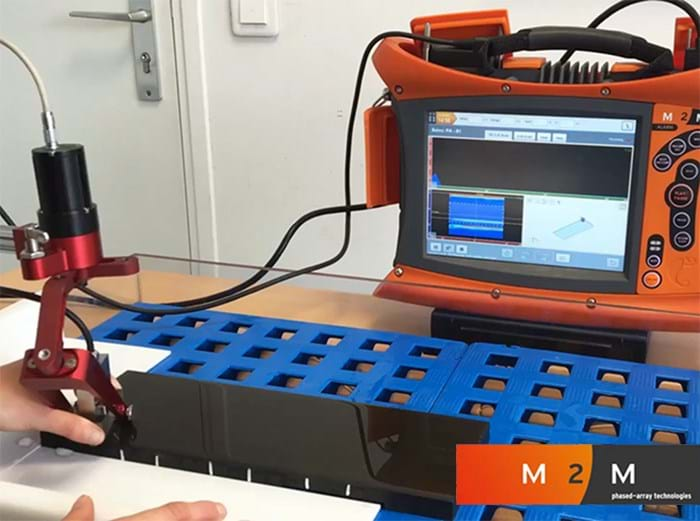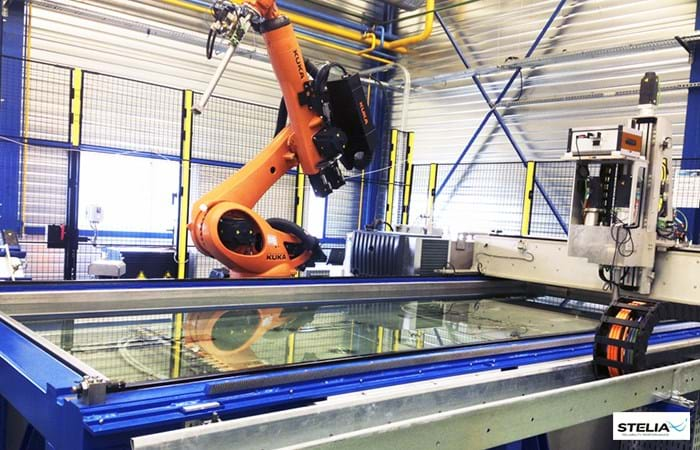Given the increased popularity of composite materials, the inspection requirements have also increased. Eddyfi Technologies offers advanced NDT solutions to provide manufacturers and inspectors with the most reliable information for capital assets and critical components across a range of industries.
Details
Structures across the marine, wind energy and aerospace industries are commonly manufactured from composite materials due to their associated advantages of reduced weight and fuel consumption, as well as better engine performance. A composite material is typically comprised of strong, stiff fibers in a tough resin matrix. These commonly include carbon fiber reinforced plastic (CFRP), glass fiber reinforced plastic (GRFP), honeycomb cores and carbon laminates.
Composite defects may form during the manufacturing process and include, but are not limited to:
- Bonding defects
- Delamination
- Fiber defects
- Fiber misalignment
- Foreign bodies
- Ply cracking
- Porosity or voids in material

In addition to manufacturing defects, in-service composite material defects result from various degeneration processes. These include, but are not limited to:
- Bond failure
- Buckling or fracture of fibers
- Cracking
- Delamination
- Failure between the fiber and matrix interface
- Moisture ingress
Regular inspection of composite materials helps ensure fitness-for-service of critical assets. Composite materials can be formed into more complex geometries than their metallic equivalents, reducing the number of components required along with the need for fasteners and joints which tend to be the weak point of a part. While an obvious advantage to the manufacturer, this presents challenges for integrity assessments of the variance in surface curvature and thickness of intricate components.

Non-destructive testing (NDT) is used for testing both manufacturing and in-service defects of CFRP, CGRP, honeycomb cores and carbon laminates. Ultrasonic testing (UT) can detect and characterize small defects by examining materials in pulse-echo or through-transmission modes. Typically large structures, composite material inspection employing phased array UT (PAUT) offers a more efficient solution. PAUT uses a single transducer with multiple elements to direct, focus and scan beams on the composite part under assessment.
The M2M Gekko® was the first portable unit with standard support for 3-axis encoding, making it possible to use with mouse type scanners for fast screening of large plates. It can map extensive composite components without needing to perform raster scans; acquisition is like painting the part with the probe. A typical wheel probe can be used with Gekko, acquiring data along a line; the clicker increments the scan to perform other lines and fill a C-scan.

The SAUL (Surface-Adapting Ultrasound) technique enables the transmission of an incident wave-front perpendicular to any complex surface. One specimen with variable geometries (flat, concave, or convex surfaces) can be entirely controlled using a unique probe such as a matrix array with a flat active aperture. The real-time adaptive processing is illustrated through measurements obtained with typical aircraft, vessels, and wind tower composite structures like CFRP stringers and stiffeners.

The M2M Panther™ is designed for industrial applications, offering unparalleled performance in a compact unit. It comes with the speed required for industrial integrated PAUT solutions with the most complete set of Total Focusing Method (TFM) imaging techniques, making it the ultimate tool for composite defect detection. Recognized among the highest resolution UT techniques, TFM is standard on Panther with TFM pictures of 1.5+ million pixels in real time. It provides better flaw detection and easier defect characterization.
Given the increased popularity of composite materials, the inspection requirements have also increased. Eddyfi Technologies offers advanced NDT solutions to provide manufacturers and inspectors with the most reliable information for capital assets and critical components across a range of industries.








